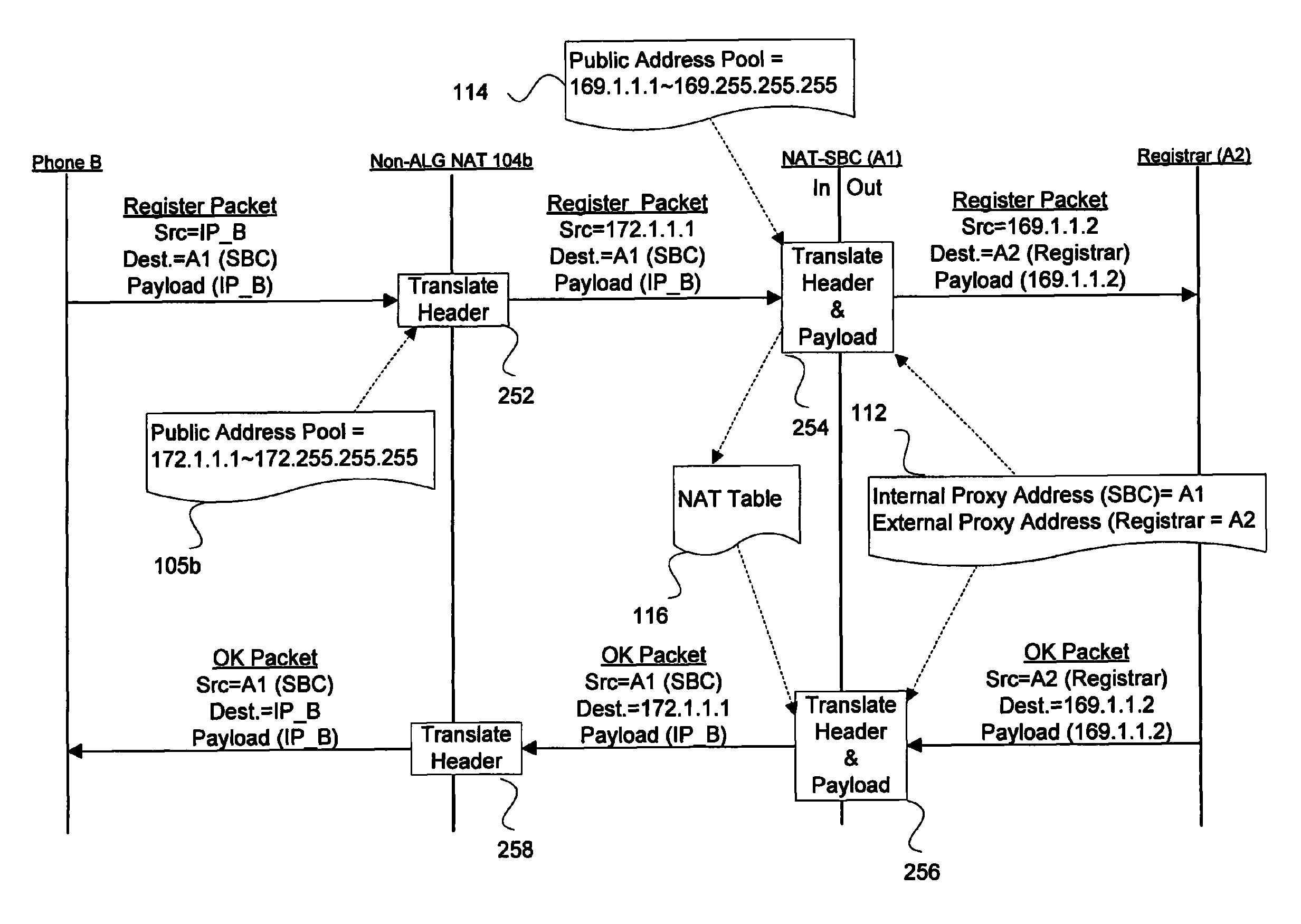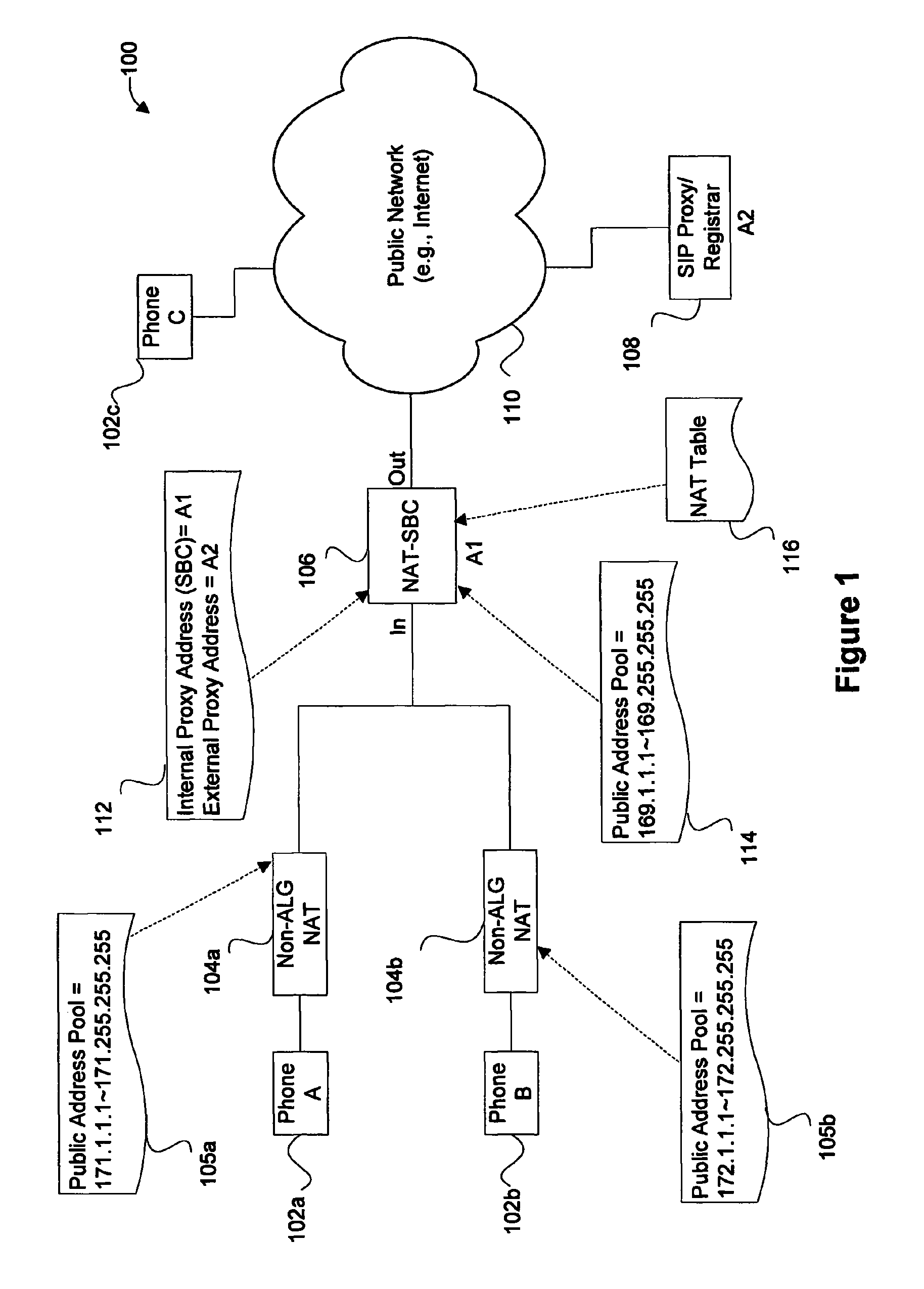Mechanisms for using NAT at a session border controller
a technology of nat and controller, applied in the field of session data processing methods and apparatus, can solve the problems of endnode expiration time, significant amount of resources, and significant overhead of alg's in each endnode's router
- Summary
- Abstract
- Description
- Claims
- Application Information
AI Technical Summary
Benefits of technology
Problems solved by technology
Method used
Image
Examples
example implementations
[0023
[0024]FIGS. 2A and 2B illustrate communication diagrams for registering phone A and phone B, respectively, in accordance with one implementation of the present invention. As shown in FIG. 2A, phone A sends a register packet having a source address equal to IP_A and a destination address equal to A1, which is the address of the NAT-SBC 106 of FIG. 1. The source address IP_A of phone A is also contained within the payload, e.g., as a caller identifier.
[0025]The Non-ALG NAT 104a receives this register packet and then translates only the header in operation 202. Accordingly, the register packet now has a source address equal to 171.1.1.1, which with obtained from the public address pool 105a of the Non-ALG NAT 104a. The Non-ALG NAT does not translate any addresses in the payload. The source address IP_A, which is the private address for phone A, remains untranslated in the payload.
[0026]This register packet is then received by the NAT-SBC 106. The NAT-SBC then translates the header...
PUM
 Login to View More
Login to View More Abstract
Description
Claims
Application Information
 Login to View More
Login to View More - R&D
- Intellectual Property
- Life Sciences
- Materials
- Tech Scout
- Unparalleled Data Quality
- Higher Quality Content
- 60% Fewer Hallucinations
Browse by: Latest US Patents, China's latest patents, Technical Efficacy Thesaurus, Application Domain, Technology Topic, Popular Technical Reports.
© 2025 PatSnap. All rights reserved.Legal|Privacy policy|Modern Slavery Act Transparency Statement|Sitemap|About US| Contact US: help@patsnap.com



